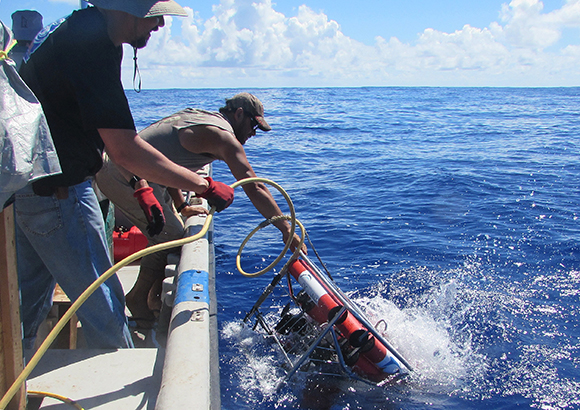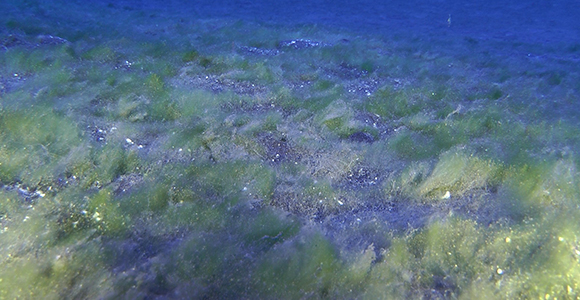
Expedition sets off to investigate unknown life forms in the Pacific Ocean
Life can flourish under the most extreme conditions. This can be observed in the waters off the pacific island Rapa Nui, where some unusual light-dependent microbes and corals recently have been found at surprisingly great depths.
- It is very fascinating to study life that thrives under extreme conditions. It can teach us about the biological variety diversity on our planet, expanding our understanding of the origin and evolution of life, says Professor Ronnie N. Glud of the University of Southern Denmark (SDU).
Together with Dr. Karl Attard and Technician Anni Glud, he will leave for the South Pacific in a few days’ time to take part in an expedition to the deep, clear water off Rapa Nui (previously also known as Easter Island).
The goal of the expedition is some newly discovered colonies of microbes and corals that live at depths down to 200 - 250 meters. The microbial communities are apparently dominated by cyanobacteria, which form large "mats" of biomass at the seabed.
”It is very fascinating to study life that thrives under extreme conditions. It can teach us about the biological variety diversity on our planet, expanding our understanding of the origin and evolution of life
Extreme lighting conditions
The bacteria are phototrophic; i.e. they use light as a source of energy. Being phototrophic in 200 m deep water is quite an achievement, because the light level is extremely low and has a very special spectral composition.
The corals are also phototrophic (or more precisely; they live in symbiosis with other organisms that are phototrophic), so they are also adapted to this particular habitat.
- Both bacteria and the organisms that live in symbiosis with the corals apparently exploit the blue-violet light that prevail at these water depths. We suspect that they have special pigments that enable them to capture the energy of the unusual light - we look forward to studying this further, says Ronnie N. Glud.
Measuring biological activity at the seabed
The team want, among other things, to investigate how much oxygen the special phototrophic communities produce with the limited amount of light during the daytime and how much oxygen they consume at night.

This will give them an indication of how efficiently these communities grow and to what extent they can form the nutrition for higher life forms in the otherwise extremely nutrient-poor environment.
The team from SDU will apply a very special instrument that can measure the oxygen transport between the phototrophic communities and the bottom water without disturbing them or changing the physical and chemical conditions at the seabed.
The rain brings nutrients
The bacterial mats not only need light to thrive - they also need nutrients. Although land is some distance away, this is probably one source of nutrients.

- When it rains on land, the rainwater sinks into the underground and from here the nutrient-enriched water seeps out of the seabed sustaining the bacterial growth at the seabed - at least that's one hypothesis that we will try to investigate, explains Ronnie N. Glud.
The research team will leave for Rapa Nui on December 2nd, and the expedition is expected to last 2-3 weeks.
Cooperation with Chile and the Netherlands
The expedition is carried out in collaboration with researchers from the Chilean University of the Universidad Católica del Norte and the University of Amsterdam, the Netherlands.
The team has complementary expertise that will provide the researchers with a comprehensive understanding of the special, biological communities.
The expedition includes a dive team that, with special gas mixtures, can dive to depths exceeding 100 m. This ensures that researchers can place their instruments correctly at the seabed and to recover relatively undisturbed samples for further studies in the laboratory.
Rapa Nui
This Chilean island with approx. 3,000 inhabitants is one of the most isolated islands in the world.
The island is known for its approx. 600 prehistoric, very characteristic stone statues erected 1,200-1,500 years ago by Polynesians.
Meet the researcher
In addition to photosynthesis in coastal regions, Ronnie N. Glud works with many different aspects of carbon turnover in the ocean. He is an expert in deep-sea exploration and has investigated several deep-sea trenches. He was recently awarded 54.6 million DKK from Danish National Research Foundation for the establishment of a new research center to explore the deepest parts of the oceans.